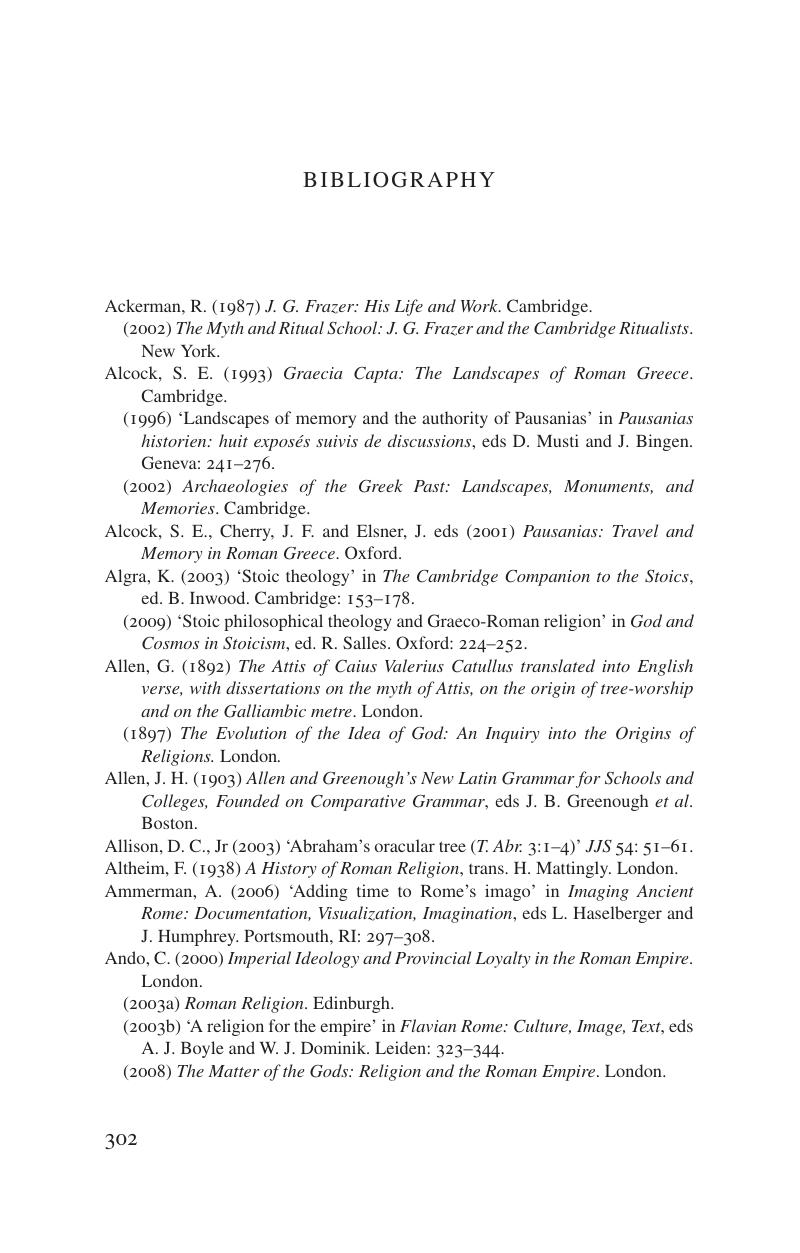Book contents
- Frontmatter
- Dedication
- Contents
- List of figures
- Acknowledgements
- 1 Rooting in: why give time to sacred trees?
- 2 A brief history of tree thinking: the enduring power of animism
- 3 How arboreal matter matters: rethinking sacrality through trees
- 4 Arboriculture and arboreal deaths: rethinking sacrality again
- 5 Confronting arboreal agency: reading the divine in arboreal behaviour
- 6 Imagining the gods: how trees flesh out the identity of the divine
- 7 Branching out: what sacred trees mean for Roman religion
- Appendix
- Bibliography
- Index
- References
Bibliography
Published online by Cambridge University Press: 05 September 2016
- Frontmatter
- Dedication
- Contents
- List of figures
- Acknowledgements
- 1 Rooting in: why give time to sacred trees?
- 2 A brief history of tree thinking: the enduring power of animism
- 3 How arboreal matter matters: rethinking sacrality through trees
- 4 Arboriculture and arboreal deaths: rethinking sacrality again
- 5 Confronting arboreal agency: reading the divine in arboreal behaviour
- 6 Imagining the gods: how trees flesh out the identity of the divine
- 7 Branching out: what sacred trees mean for Roman religion
- Appendix
- Bibliography
- Index
- References
Summary

- Type
- Chapter
- Information
- Reviving Roman ReligionSacred Trees in the Roman World, pp. 302 - 327Publisher: Cambridge University PressPrint publication year: 2016

